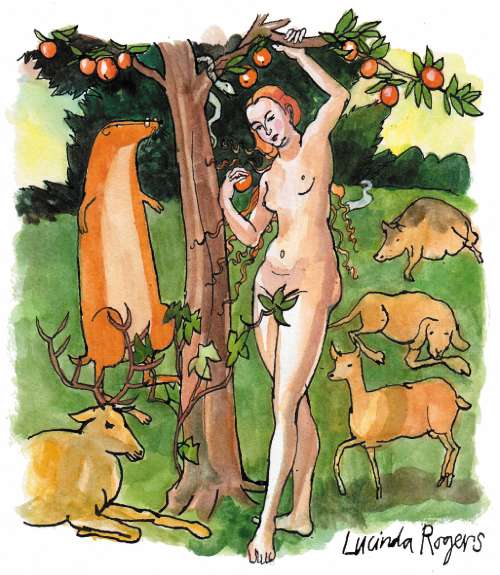The Weasel: London calling

Though the phrase is blithely tossed about, I cannot fathom out how high-fliers manage to "divide their time" between, say, "an ocean cottage in Malibu and a townhouse in Knightsbridge". Any attempt to shift between our humble dwellings in south London and North Yorkshire involves a logistical exercise on much the same scale as Operation Overlord. For some reason, we find it impossible to make the 250-mile journey unaccompanied by a scarcely conceivable amount of clothing, books, computers and emergency provisions of bacon and cheese. Since Yorkshire is not short of these comestibles, it is far from unknown for them to make the round trip, in much the same way as Norwegian aquavit is matured by being used as ballast on merchant vessels bound for Australia.
When we arrive at our distant goal, either northern or southerly, we inevitably find that an essential item has been left behind. Or, equally galling, we receive tempting invitations to events near our other gaff. Like Lady Kitty Spencer, who found herself at the wrong Stamford Bridge due to her driver's sat-nav obeisance, we are often in the wrong Weasel Villas. When a number of invites to enticing wing-dings in the metropolis arrived during our recent stay in Yorkshire, I did my Big Chief Stoneface impression and firmly shook the nut. "Why should we gritty northerners take the bait for some fashionable frivolity in W1?" I would mutter, while enjoying a bracing stroll among the hail-laden zephyrs of Filey Beach.
I was as unbudgeable from Yorkshire as the limestone massif of Ingleborough. At least I was until I received an invitation to the launch of The New English Table by my friend Rose Prince (Fourth Estate, £25). Though it meant leaving Mrs W to enjoy the sleety blasts of N Yorks by herself, I felt that my presence was urgently required on Marylebone High Street, W1. The fact that Rose's book launches are without parallel for the quantity and quality of the sustenance provided did not, of course, play any part in my selfless decision to hop on a train for the south. Admittedly on reaching the venue, I found it necessary to take on board numerous samples of cold pork with anchovy and caper sauce (page 324) and potted crab (page 153), but this was purely for research purposes. I can't remember when I've enjoyed research more.
Oddly, since I had been in the north for little more than a week, I found myself behaving very much in the manner of a provincial newcomer to the capital. The soigné boulevardier had been transformed into an out-of-town rube. You can judge the radical nature of this metamorphosis by the fact that after arriving at King's Cross I chose to walk to Marylebone High Street. No Londoner would ever undertake such a trek. Toughened by route marches on Filey Beach, my feet, or, as Londoners invariably refer to them, my "plates of meat", made light work of Euston Road. Despite the reviving intake of carbon monoxide during this two-mile hike, I continued to behave in the manner of a country cousin. On the following day, I found myself viewing unclad females near Piccadilly Circus.
It is not unknown for unclothed pulchritude to lure the punters in this vicinity, but it is rare for the charmers on display to be getting on for 500 years old. The attractive young women who enliven the canvases of Lucas Cranach (on show at the Royal Academy until 8 June) are unlike their counterparts painted by any other old master. Adorned only by a bling-style necklace or conveniently located foliage, these northern blondies are utterly modern in shape (no Rubens spare tyres here), hair-dos and even their up-for-it good humour. In Adam & Eve (1526), Eve adopts a model's pose with one shapely leg before the other that might be seen in the current issue of Vogue. Offered fatal fruit by this pouting scrumper, Adam scratches his head in befuddlement. The tree, incidentally, looks an excellent cropper, though its evident appeal to snakes may be a bit of a drawback for apple lovers.
A caption on the gallery wall informs us that "the moralising messages often embedded in Cranach's painting share a common subject: the duplicity of women". Possibly this is exemplified by the naked couple bathing in a milky pond at the bottom of Cranach's 1530 masterpiece The Golden Age. Reversing the customary sexual roles, the girl is giving a double-handed splash to her shrinking male companion. Cranach's astonishing modernity can even be seen in his treatment of religious subjects. In his early Martyrdom of St Catherine (1505), the saint is dressed for a night on the town with a fancy hair-do and off-the-shoulder velvet gown despite her imminent decapitation by a David Jason lookalike. Similarly, the artist's lucrative sequence of "ill-matched couples" finds an echo in our fascination with Mr and Mrs B Ecclestone and Mr and Mrs R Stewart.
Cranach's mode of working was centuries ahead of its time. While well-trained assistants produced much of his output, Cranach found time for various businesses including a liquor-licensed pharmacy. I would not want to draw parallels with any modern maître, though it seems a curious coincidence that Damian Hirst subcontracts the manufacture of such masterpieces as his diamond skull For the Love of God (2007), while at the same time running a restaurant. His first venture in this field was a licensed establishment called Pharmacy.
Join our commenting forum
Join thought-provoking conversations, follow other Independent readers and see their replies
Comments
Bookmark popover
Removed from bookmarks